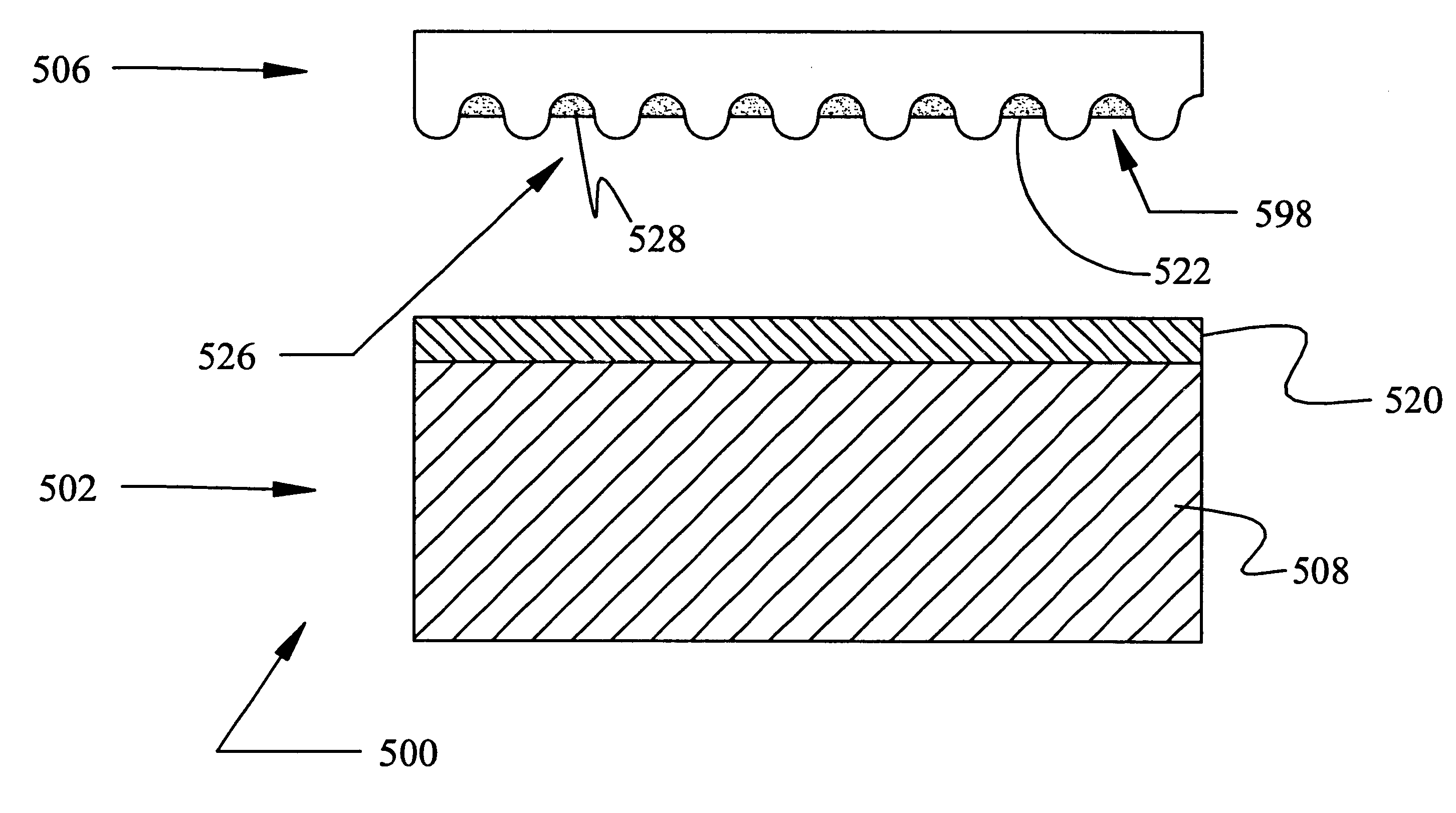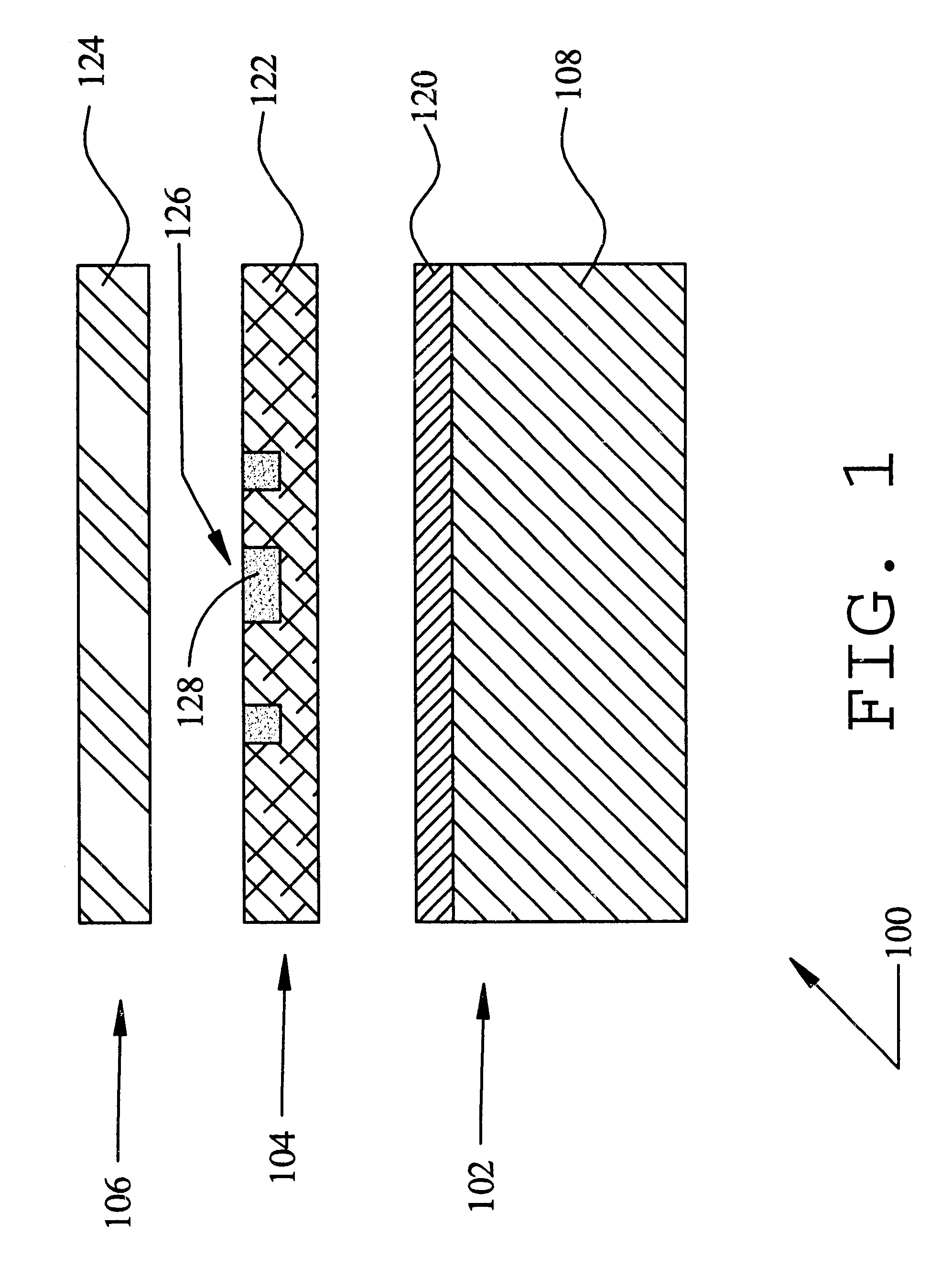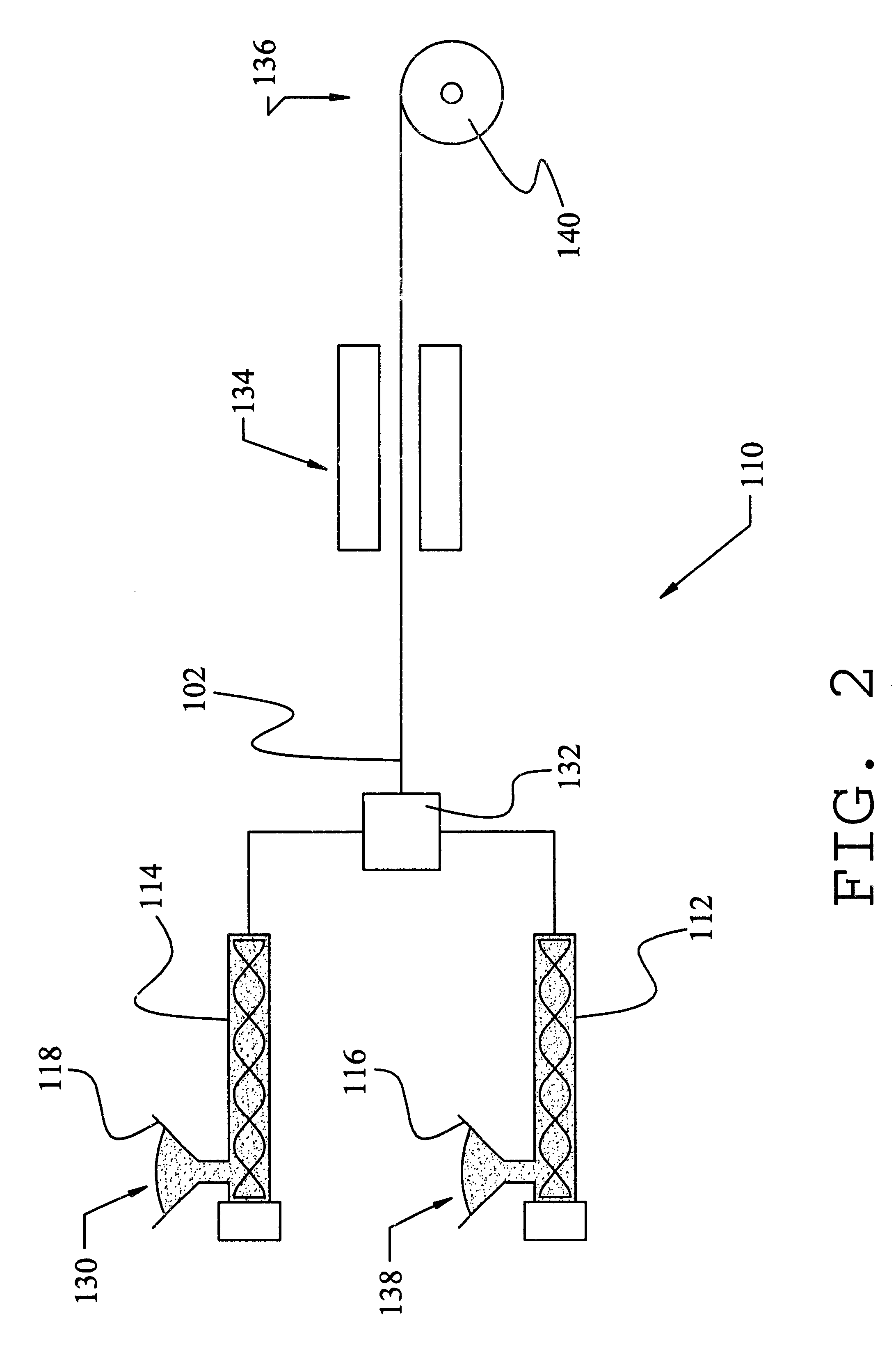Polypropylene card construction
a polypropylene card and polypropylene technology, applied in the field of image retaining cards, can solve the problems of identification cards that are subjected to repeated flexing, identification cards that are often cracked, and/or delaminate, etc., and achieves good abrasion resistance, low cost, and enhanced adhesion.
- Summary
- Abstract
- Description
- Claims
- Application Information
AI Technical Summary
Benefits of technology
Problems solved by technology
Method used
Image
Examples
example 1a
A substrate layer material comprising 96% polypropylene and 4% TiO.sub.2 as prepared by combining 7C50 IMPACT polypropylene resin (Union Carbide Corporation, Danbury, Conn.) with a precompounded TiO.sub.2 / polypropylene material. The precompounded TiO.sub.2 / polypropylene material was purchased from Clariant Corporation of New Hope, Minn. which identifies it by the part number 1015100P. This material is precompounded at a ratio of 1 part TiO.sub.2 to 1 part polypropylene. The substrate layer material was loaded into a twin screw extruder manufactured by Berstroff of Charlotte, N.C. The twin screw extruder had a L / D equal to 32 and was run at 100 RPM with a temperature profile of 148.degree. C.-176.degree. C.-204.degree. C.-218.degree. C.-218.degree. C.-218.degree. C.-218.degree. C.
The substrate tie layer material comprised ELVAX 3175 ethylene vinyl acetate polymer available from E. I. DuPont de Nemours and Company of Wilmington, Del. The substrate tie layer material was loaded into ...
example 1b
A substrate layer material comprising 76% polypropylene, 4% TiO.sub.2, and 20% ethylene vinyl acetate polymer was prepared by combining 7C50 IMPACT polypropylene resin (Union Carbide Corporation, Danbury, Conn.) with a precompounded TiO2 / polypropylene material (Clariant #1015100P), and ELVAX 3175 ethylene vinyl acetate polymer. The substrate layer material was loaded into a twin screw extruder manufactured by Berstroff of Charlotte, N.C. The twin screw extruder had a L / D equal to 32 and was run at 100 RPM with a temperature profile of 148.degree. C.-176.degree. C.-204.degree. C.-218.degree. C.-218.degree. C.-218.degree. C.-218.degree. C.
The substrate tie layer material comprised ELVAX 3175 ethylene vinyl acetate polymer available from E. I. DuPont de Nemours and Company of Wilmington, Del. The substrate tie layer material was loaded into a single screw extruder manufactured by Davis-Standard, Pawcatuck, Conn. The single screw extruder had a L / D equal to 27 and was run at approximate...
example 2a
A substrate layer material comprising 96% polypropylene and 4% TiO2 as prepared by combining PRO-FAX 6433 Homopolymer polypropylene (Montell, Wilmington, Del.) with a precompounded TiO2 / polypropylene material (Clariant #1015100P). The substrate layer material was loaded into a twin screw extruder manufactured by Berstroff of Charlotte, N.C. The twin screw extruder had a L / D equal to 32 and was run at 100 RPM with a temperature profile of 148.degree. C.-176.degree. C.-204.degree. C.-218.degree. C.-218.degree. C.-218.degree. C.-218.degree. C.
The substrate tie layer material comprised ELVAX 3175 ethylene vinyl acetate polymer available from E. I. DuPont de Nemours and Company of Wilmington, Del. The substrate tie layer material was loaded into a single screw extruder manufactured by Davis-Standard, Pawcatuck, Conn. The single screw extruder had a L / D equal to 27 and was run at approximately 10 RPM with a temperature profile of 148.degree. C.-176.degree. C.-218.degree. C.
A substrate str...
PUM
| Property | Measurement | Unit |
|---|---|---|
| Fraction | aaaaa | aaaaa |
| Fraction | aaaaa | aaaaa |
| Structure | aaaaa | aaaaa |
Abstract
Description
Claims
Application Information
 Login to View More
Login to View More - R&D
- Intellectual Property
- Life Sciences
- Materials
- Tech Scout
- Unparalleled Data Quality
- Higher Quality Content
- 60% Fewer Hallucinations
Browse by: Latest US Patents, China's latest patents, Technical Efficacy Thesaurus, Application Domain, Technology Topic, Popular Technical Reports.
© 2025 PatSnap. All rights reserved.Legal|Privacy policy|Modern Slavery Act Transparency Statement|Sitemap|About US| Contact US: help@patsnap.com



